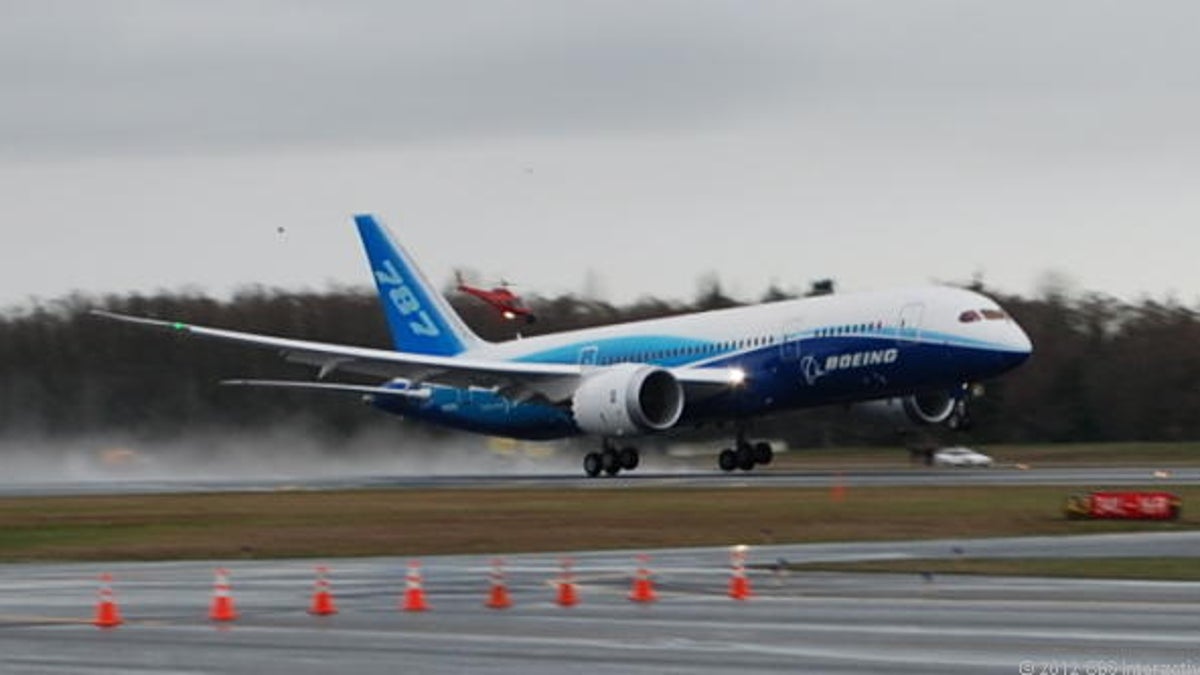FAA approves Boeing test flights of grounded 787 Dreamliner
Aircraft builder will be allowed to conduct test flights of the much-hyped aircraft after onboard battery fires led the FAA to ground the planes.

Boeing was granted permission today to conduct test flights of its 787 Dreamliner as the aircraft maker tries to determine the cause of battery fires that have kept the fleet of planes grounded around the world.
The test flights will be subject to a number of restrictions, the Federal Aviation Administration said today, including limiting the flights to specific airspace over unpopulated areas. Other conditions include preflight testing and inspections, and in-flight monitoring.
"The traveling public's safety is our highest priority," the FAA said in a statement. "These test flights will be an important part of our efforts to ensure the safety of passengers and return these aircraft to service."
The Seattle-based aircraft builder said it hopes to resume flight test activities soon using its fifth flight test airplane, though it didn't say how many flights were planned.
"While our work to determine the cause of the recent battery incidents continues in coordination with appropriate regulatory authorities and investigation agencies, we are confident that 787 is safe to operate for this flight test activity," the company said in a statement. "As additional precautions, we have implemented additional operating practices for test flights, including a onetime preflight inspection of the batteries, monitoring of specific battery related status messages, and a recurring battery inspection."
The FAA ordered airlines to ground their fleets of the much-hyped Dreamliner last month after a series of fires involving the aircraft's lithium-ion batteries. The action came on the heels of Japanese carriers All Nippon Airways and Japan Airlines grounding their 787s after a battery fire forced the evacuation of an ANA flight.
A similar incident occurred January 7 when a JAL 787 on the ground at Boston's Logan International Airport caught fire. In response, the FAA announced it would conduct a comprehensive review of the aircraft, which features innovative use of composite materials.
The National Transportation Safety Board announced today it had traced the JAL battery fire to short circuit of a single cell that then spread to other cells. The safety board further said it will focus on the design and certification requirements of the battery system.
The NTSB said a Boeing risk assessment conducted during the plane's certification process found that the likelihood of a battery smoke emission event would occur on the 787 less than once in every 10 million flight hours.
Noting that there have already been two incidents in less than 100,000 flight hours, NTSB Chairman Deborah A.P. Hersman said in a statement that "the failure rate was higher than predicted as part of the certification process and the possibility that a short circuit in a single cell could propagate to adjacent cells and result in smoke and fire must be reconsidered."

